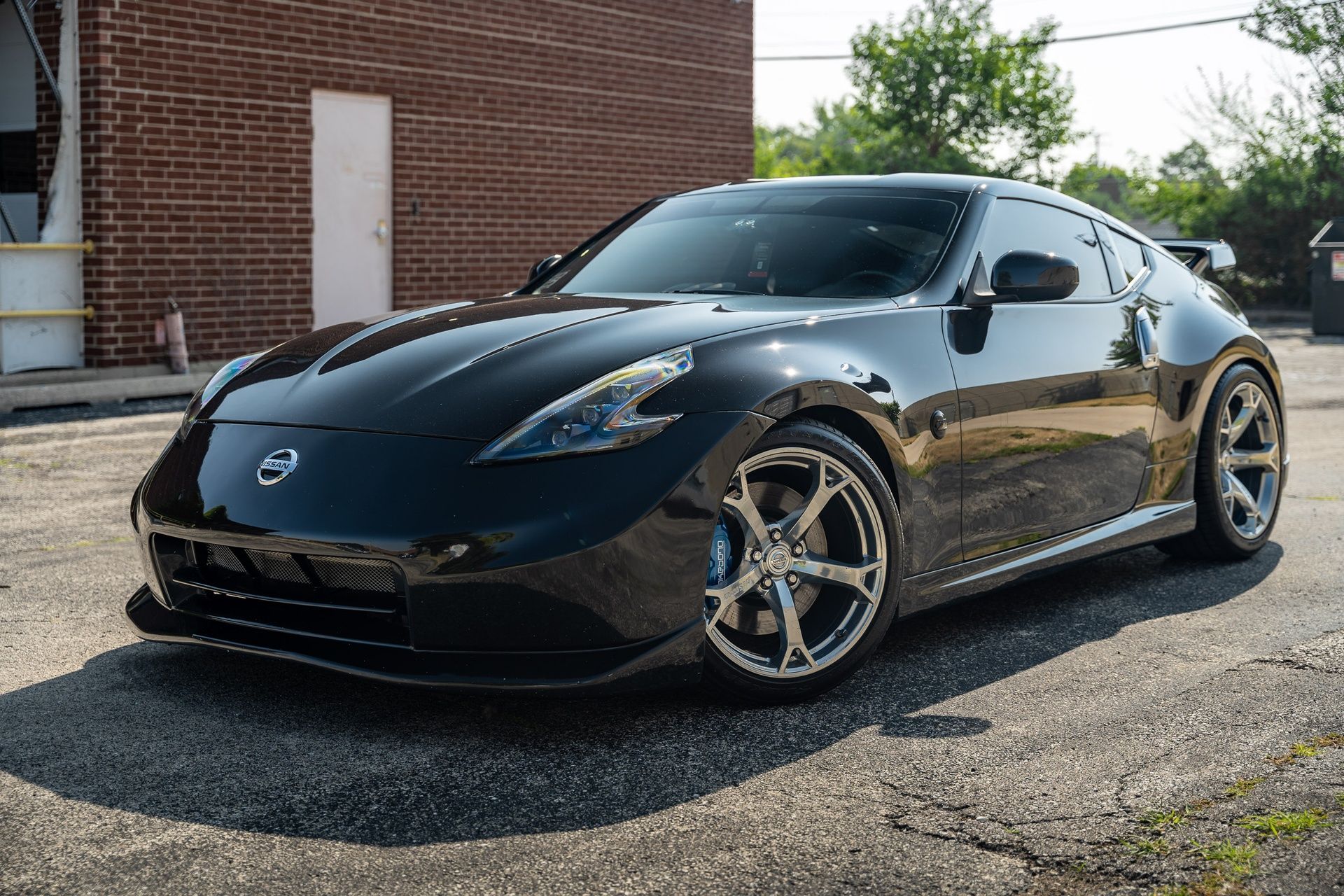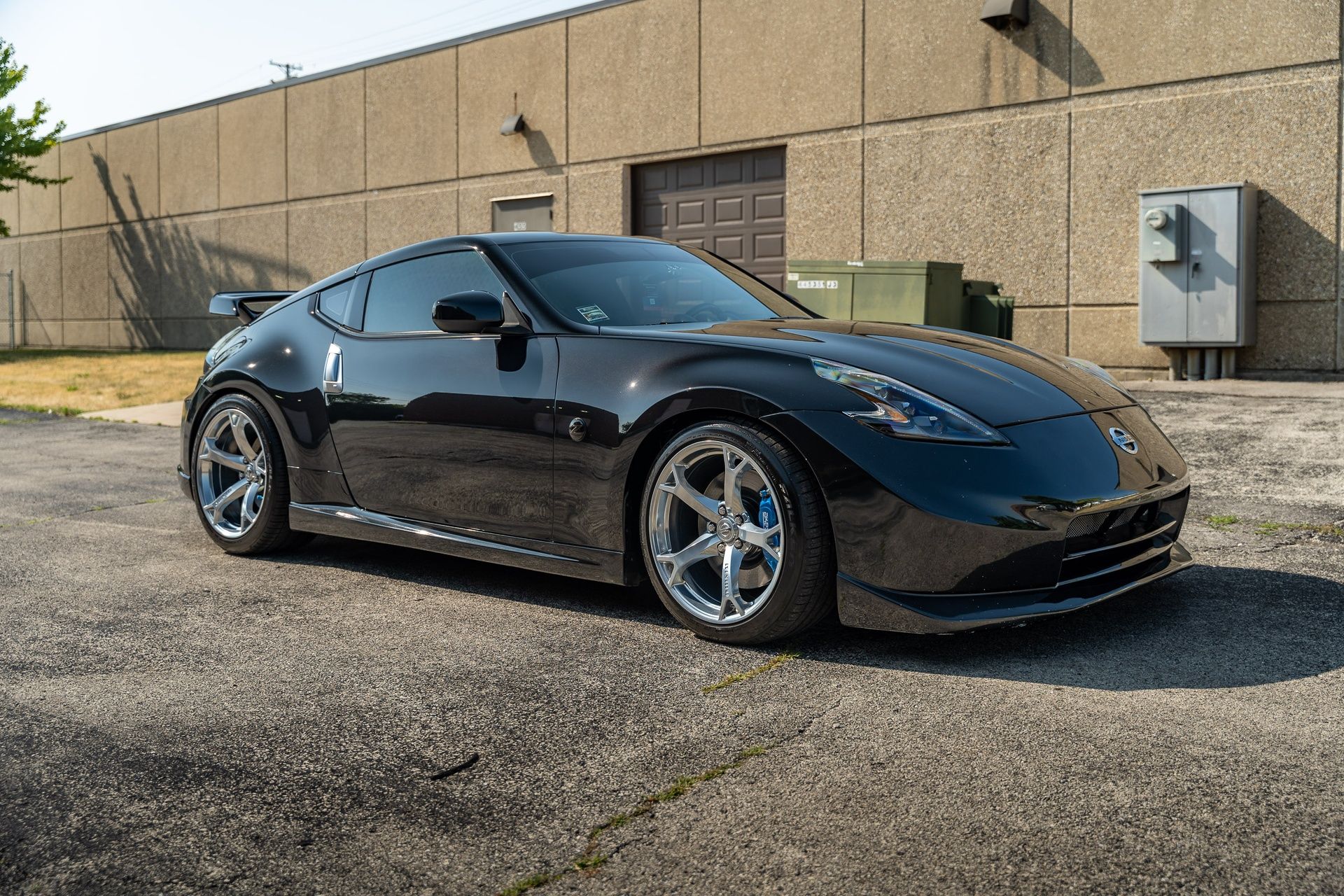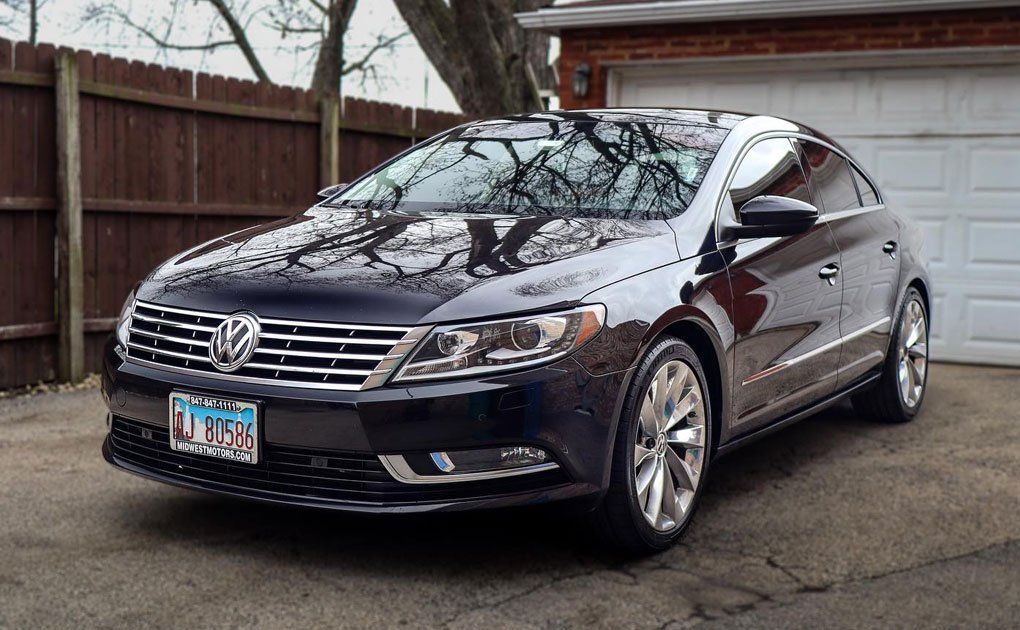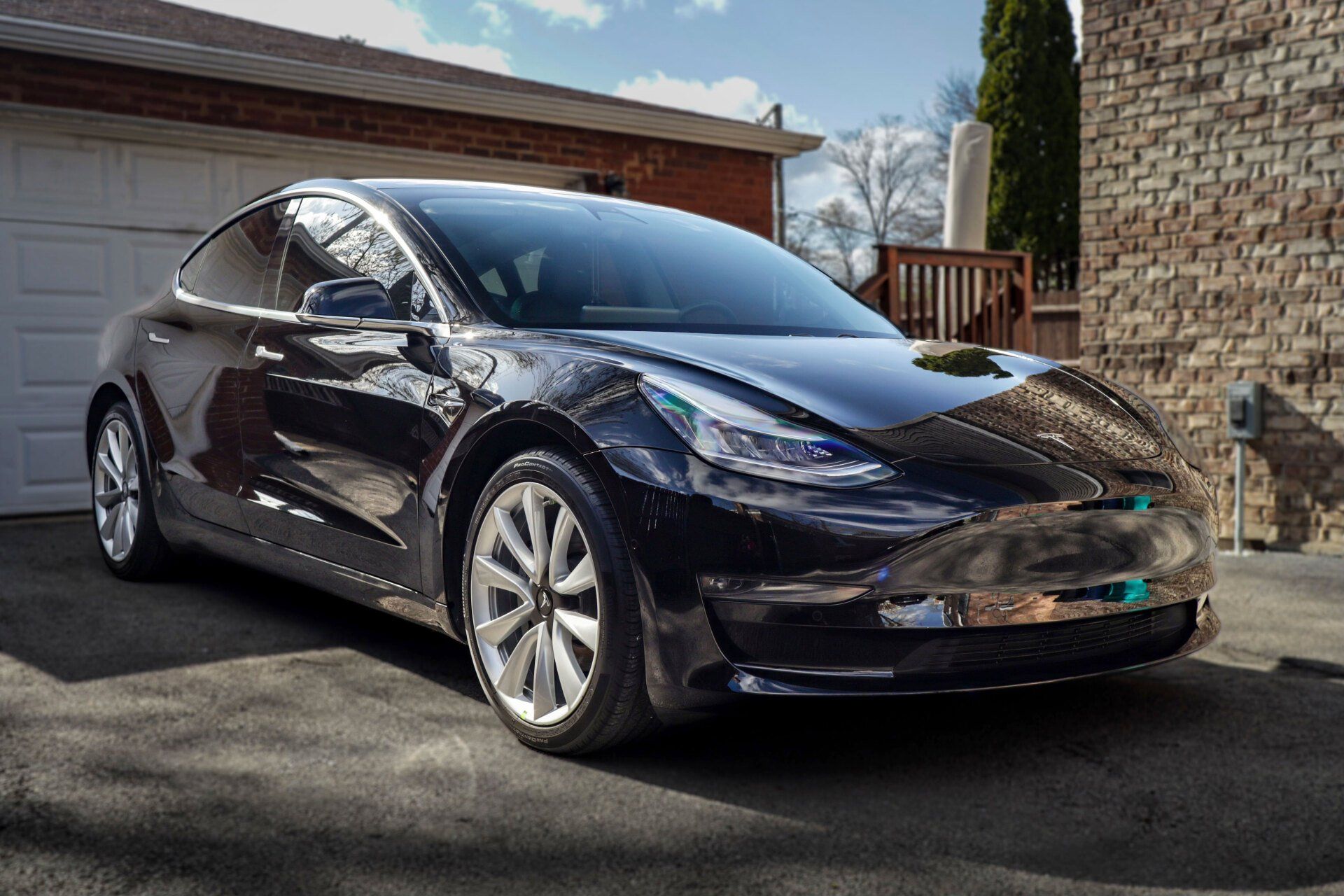How to Avoid Visible Edges in PPF Applications: Proven Methods Used by Professionals
CALL (708) 574-8496
GET A FREE ESTIMATEIf you've ever seen a car covered in paint protection film (PPF) and wondered how to avoid those pesky visible edges, you’re not alone. Many drivers want their vehicle's surface to look flawless while being protected from scratches and chips. The good news is that professionals have honed techniques to ensure PPF applications are seamless. Through years of experience and the right tools, they’ve discovered methods that guarantee a smooth, clean finish that makes your car’s body shine. In this article, we’ll dive into the secrets that experts use to achieve invisible edges, ensuring your vehicle looks as good as new for years to come.
Professionals avoid visible edges in PPF applications by using custom-cut films that are designed to wrap around vehicle contours, thereby minimizing the appearance of seams. Additionally, they utilize specialized tools like heat guns and precise installation techniques that help ensure smooth transitions and optimal adhesion between film sections.
Advanced Techniques for Invisible Edges
One such technique is known as tucking and wrapping. This process revolves around wrapping the PPF around vulnerable edges like corners and wheel wells. When professionals tackle this task, they don’t just rely on brute strength; they utilize a heat gun to carefully warm the film. This heating makes the material softer, allowing it to become malleable enough to stretch, tuck, and adhere around tricky edges without creating unsightly creases or bubbles.
To visualize this, think about how a skilled tailor pulls fabric snugly over a contour—it’s much like that! For example, while working on a sedan, installers place special emphasis on areas like the front bumper and the edges of the hood. Typically, they’ll tuck the film roughly 1/4 inch beneath adjoining panels, ensuring a clean and tidy look that seems almost effortless.
From tucking and wrapping, we move to another sophisticated method used in professional applications: the floating technique. The floating technique centers on precision. Instead of affixing the film directly onto the surface right away, installers first lay it upon a lubricated surface—often using a specialized solution that allows movement. This initial positioning fosters minor adjustments to achieve perfect alignment before any commitment is made. Such meticulous adjustment is vital for achieving that sought-after seamless appearance, as even a tiny misalignment can result in visible lines—something everyone wants to avoid in a quality PPF application.
By mastering tucking and wrapping alongside the floating technique, you ensure not only protection but an aesthetic finish that enhances your vehicle’s appeal while safeguarding its paint against wear and tear.
Precise Trimming and Cutting Methods
The skill of cutting and trimming PPF distinguishes an expert from an amateur. A professional understands that precision in every cut impacts not just the appearance but also the longevity of the film. To begin with, one essential tool in a professional's arsenal is a high-quality plotter machine. These machines have revolutionized the way PPF is applied; they are pre-programmed with hundreds of vehicle templates, cutting precise patterns that ensure accuracy while dramatically reducing manual errors. For instance, imagine a plotter machine effortlessly cutting the exact shape of a Ferrari's fender. This level of accuracy means each edge fits seamlessly without requiring additional adjustments, which can be cumbersome and time-consuming. However, it doesn't stop there; another important technique lies in hand trimming and edge work.
Hand Trimming and Edge Work
Hand trimming is essential for customization and fine-touch work that requires human finesse. Experts often resort to surgical scalpels and specialized blades, approaching each job with meticulous care. By making light, shallow cuts close to the edges of panels, they achieve refined results that automated processes may overlook. One vital point is to always use a fresh, sharp blade for every job; this prevents tearing or jagged edges that can ruin an otherwise perfect installation. Imagine holding a delicate piece of film in your hands; a clean cut ensures that it will hug the contours of the vehicle beautifully, promoting both aesthetics and durability.
Once you master these cutting techniques, ensuring full coverage becomes a simpler task. It’s crucial to consider how different tools and methods interact during the installation process. Combining technology with skilled handwork creates synergy: the precision of plotter machines establishes dependable outlines while hand trimming adds that custom touch needed for a flawless finish. This combination minimizes visible edges, leading towards an overall polished look—a hallmark of quality PPF application. With practice, patience, and attention to detail, anyone can transition from novice to expert in applying PPF effectively.
Now that we've explored effective methods for achieving seamless edges, it's time to focus on the vital aspect of complete surface coverage.
Ensuring Complete Coverage
Complete coverage is not just a goal; it's a necessity for both protecting your vehicle and improving its appearance. Every inch of the surface needs careful consideration when applying PPF. Without proper coverage, you risk exposing your vehicle's paint to elements that could cause scratches, chips, or fading.
Overlapping and Overstretching
One effective technique to achieve complete coverage is through overlapping film sections. This method ensures no part of the vehicle remains exposed. Minor overlaps are common in professional applications because they allow for invisible edges, blending the film seamlessly into the car’s original paint. For instance, when edging around headlights or taillights, overlapping can create a seamless transition, leaving no visible seams that might attract attention.
In scenarios like hood protection, stretching the film slightly allows it to flex with the contours of the car while minimizing any glare or visual breaks. Strategic use of these techniques enhances the overall aesthetics of your vehicle after installation.
Double-checking for Gaps
Another crucial step in ensuring complete coverage is conducting a thorough review after installation. Often, what looks perfect at first glance can reveal itself as flawed upon closer inspection. Having an extra set of eyes can be beneficial during this phase. A quick walk around the vehicle will help spot uncovered gaps that might have been overlooked initially—areas where dirt can enter or moisture may accumulate under the film. Expert installers leverage their skills and insights gained from experience to make these checks more effective, ensuring nothing is missed as they hone their proficiency in this art form.
Skill Mastery and Expertise
Experience plays a crucial role in successful Paint Protection Film (PPF) installations, particularly in avoiding visible edges. The mastery of skill sets is fostered through years of dedication to understanding both the materials and techniques used in these applications. For example, seasoned professionals have often undergone rigorous training, accumulating anywhere from 40 to 80 hours focused on PPF application techniques alone. This foundation allows them to assess nuances that an inexperienced technician might overlook.
When it comes to employing specialized tools like heat guns and squeegees, proficiency makes all the difference. A skilled installer can manipulate the film just right, ensuring it adheres tightly without the risk of bubbling or peeling later on. Think of it like a chef who knows precisely when pasta is al dente without needing a timer; they can make adjustments on the fly based on what they see and feel. That’s the kind of instinctive knowledge that comes from countless repetitions and familiarization with best practices.
In addition to using the right temperature settings, professionals also understand how PPF will perform under different conditions—whether exposed to sunlight, moisture, or even varying air pressures during installation. These insights allow them to select the best methods for each individual job. Consider that about 90% of experienced professionals utilize such specialized tools compared to novices who may resort to household items, risking poor application as a result.
Furthermore, investing in professional installation maximizes the quality of materials used. For instance, high-quality brands are preferred by 85% of professionals due to their superior conformability and edge retention. High-quality PPF can more effectively resist physical damage and maintain its clarity over time, ensuring both longevity and aesthetics. Understanding the significance of experience and quality tools is essential when considering who applies your protective film. This insight leads us into exploring how a meticulous approach not only enhances performance but elevates the entire aesthetic experience as well.
Ensuring Complete Coverage
Complete coverage is not just a goal; it's a necessity for both protecting your vehicle and improving its appearance. Every inch of the surface needs careful consideration when applying PPF. Without proper coverage, you risk exposing your vehicle's paint to elements that could cause scratches, chips, or fading.
Overlapping and Overstretching
One effective technique to achieve complete coverage is through overlapping film sections. This method ensures no part of the vehicle remains exposed. Minor overlaps are common in professional applications because they allow for invisible edges, blending the film seamlessly into the car’s original paint. For instance, when edging around headlights or taillights, overlapping can create a seamless transition, leaving no visible seams that might attract attention.
In scenarios like hood protection, stretching the film slightly allows it to flex with the contours of the car while minimizing any glare or visual breaks. Strategic use of these techniques enhances the overall aesthetics of your vehicle after installation.
Double-checking for Gaps
Another crucial step in ensuring complete coverage is conducting a thorough review after installation. Often, what looks perfect at first glance can reveal itself as flawed upon closer inspection. Having an extra set of eyes can be beneficial during this phase. A quick walk around the vehicle will help spot uncovered gaps that might have been overlooked initially—areas where dirt can enter or moisture may accumulate under the film. Expert installers leverage their skills and insights gained from experience to make these checks more effective, ensuring nothing is missed as they hone their proficiency in this art form.
Skill Mastery and Expertise
Experience plays a crucial role in successful Paint Protection Film (PPF) installations, particularly in avoiding visible edges. The mastery of skill sets is fostered through years of dedication to understanding both the materials and techniques used in these applications. For example, seasoned professionals have often undergone rigorous training, accumulating anywhere from 40 to 80 hours focused on PPF application techniques alone. This foundation allows them to assess nuances that an inexperienced technician might overlook.
When it comes to employing specialized tools like heat guns and squeegees, proficiency makes all the difference. A skilled installer can manipulate the film just right, ensuring it adheres tightly without the risk of bubbling or peeling later on. Think of it like a chef who knows precisely when pasta is al dente without needing a timer; they can make adjustments on the fly based on what they see and feel. That’s the kind of instinctive knowledge that comes from countless repetitions and familiarization with best practices.
In addition to using the right temperature settings, professionals also understand how PPF will perform under different conditions—whether exposed to sunlight, moisture, or even varying air pressures during installation. These insights allow them to select the best methods for each individual job. Consider that about 90% of experienced professionals utilize such specialized tools compared to novices who may resort to household items, risking poor application as a result.
Furthermore, investing in professional installation maximizes the quality of materials used. For instance, high-quality brands are preferred by 85% of professionals due to their superior conformability and edge retention. High-quality PPF can more effectively resist physical damage and maintain its clarity over time, ensuring both longevity and aesthetics. Understanding the significance of experience and quality tools is essential when considering who applies your protective film. This insight leads us into exploring how a meticulous approach not only enhances performance but elevates the entire aesthetic experience as well.
Benefits of a Professional Finish
A professional finish offers both tangible and aesthetic benefits. When paint protection film (PPF) is expertly applied, you’re not just covering up the surface; you're investing in the life of your vehicle itself. The difference between a DIY job and a professional installation can be as pronounced as night and day, with implications that last for years.
- Enhanced Longevity: One of the first advantages to consider is enhanced longevity. Properly applied PPF by professionals can last up to 10 years, offering durable protection against road debris, UV light, and even minor abrasions. Their expertise allows for better adhesion and meticulous application techniques, which is crucial because these films need to withstand various environmental factors without peeling or showing wear. Studies have shown that professional applications can extend the film's lifespan by an impressive 30% compared to DIY installations. This long-lasting quality means fewer reapplications needed down the line, saving you time and money while ensuring continual protection.
- Aesthetic Appeal: When it comes to aesthetics, a professional application shines through. Invisible edges mean that the film is almost undetectable, preserving the vehicle's original showroom shine. This high level of craftsmanship gives your vehicle a cleaner look without compromising its visual appeal. The face of your car will stay bright and untouched, just like the first day you drove it off the lot.
- Resale Value Boost: Another significant advantage to professional PPF installation lies in boosting resale value. Vehicles that showcase well-maintained exteriors often command higher prices in the market. Buyers appreciate the enhanced protection that professionally installed PPF offers—often translating to better-maintained paintwork underneath. Understanding this full spectrum of benefits only underscores the importance of professional application techniques in PPF installations; from longevity to aesthetics and financial implications, every aspect matters.
Investing in a professional PPF installation not only enhances your vehicle's appearance but also extends its lifespan and boosts resale value. In a competitive automotive market, these advantages are invaluable for any car owner seeking to protect their investment.
Protect Your Vehicle with Precision PPF Installation
Shield your car from road debris, scratches, and daily wear with the expert paint protection film (PPF) services at D’Andrea Auto Detailing in Carol Stream, IL. Our premium PPF solutions preserve your vehicle’s pristine finish without compromising its natural beauty, providing long-lasting defense against damage. Backed by skilled craftsmanship and high-quality materials, we ensure a seamless, nearly invisible application that keeps your car looking its best for years to come. Trust us to deliver unmatched protection—schedule your PPF installation today!
D’Andrea Auto Detailing was founded in 2021, setting out to be part of the solution to the obstacle of achieving automotive protection and perfection in the often messy Midwest city of Carol Stream, Illinois. We provide two types of high-quality vehicle paint protection services - Undrdog Ceramic Coatings and XPEL Paint Protection Films - alongside individual interior rejuvenation and exterior decontamination services. We aim to help both top-tier sports cars and daily drivers always look their best and operate even better!
Quick Links
Hours of Operation
Monday-Friday: 8:00 AM - 5:00 PM
Saturday - Sunday: Closed
This website was designed by the team at
Detailers Roadmap, a platform developed for detailing operators across the globe.
All Rights Reserved | 8bitcreative, LLC | D’Andrea Auto Detailing





